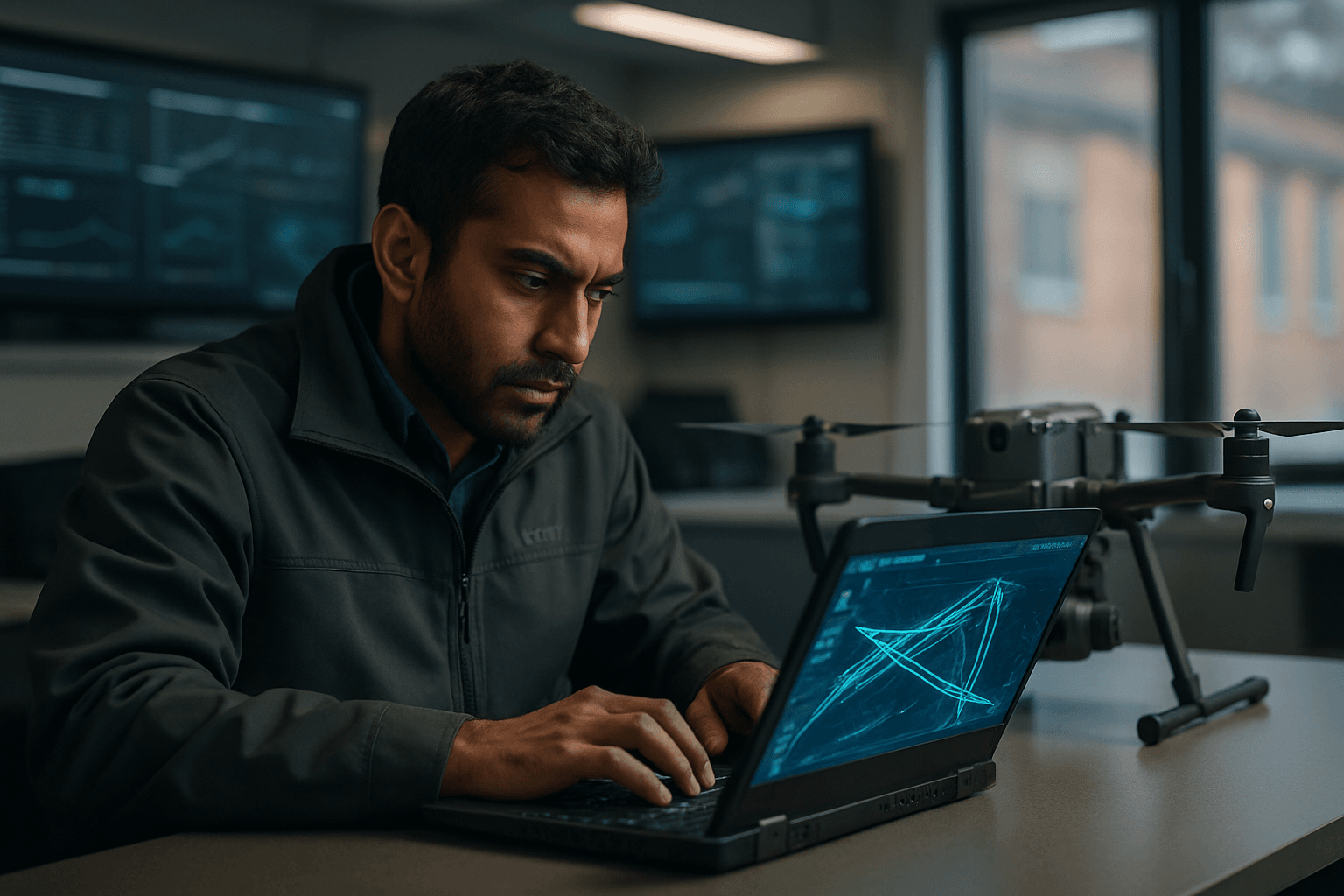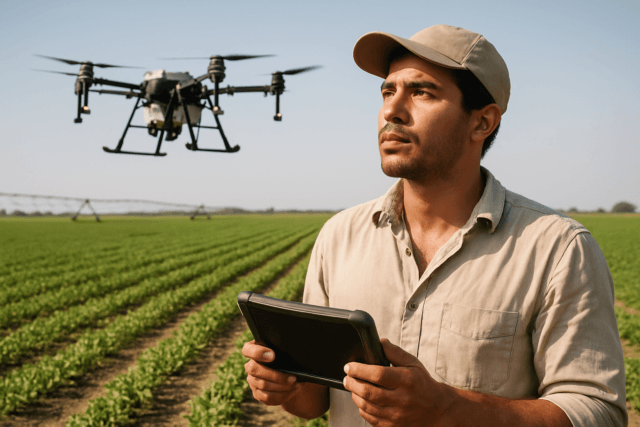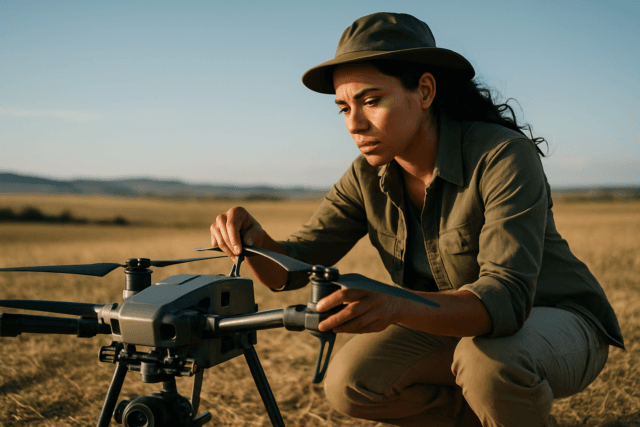The future of infrastructure maintenance is in the sky, with drones rapidly transforming how bridges, pipelines, power lines, and other critical assets are inspected. While Unmanned Aerial Vehicles (UAVs) offer significant advantages in safety, cost, and data quality over traditional manual methods, the true efficiency of drone infrastructure inspections hinges on optimizing their flight paths. This involves a strategic blend of advanced planning, cutting-edge technology, and intelligent data management to ensure comprehensive coverage, minimize flight time, and capture the most actionable insights.
Optimizing drone flight paths can lead to substantial benefits, including reducing inspection times by over half and cutting labor costs. Drones can also reach areas that are hazardous or difficult for human inspectors, enhancing safety by minimizing the need for personnel to work in dangerous conditions.
The Imperative of Optimized Flight Paths
Inefficient flight paths can lead to longer inspection times, increased battery consumption, missed data, and higher operational costs. Conversely, optimized drone flight paths ensure maximum coverage with minimal flight duration, leading to more consistent and higher-quality data collection. This is particularly crucial for large-scale infrastructure projects, such as inspecting thousands of kilometers of power lines.
The goal is to achieve comprehensive data capture, whether it’s visual imagery, thermal data, or 3D models, while adhering to safety regulations and operational constraints.
Key Elements of Flight Path Optimization
Advanced Planning and Site Assessment
Effective drone inspection begins long before takeoff. Thorough pre-inspection planning is crucial for accurate and reliable results.
- Define Inspection Goals: Clearly outline the objectives of the inspection, such as identifying structural issues, assessing asset conditions, or monitoring project progress. This will dictate the most suitable drone, sensors, and data collection techniques.
- Site Analysis and Hazard Identification: Conduct a detailed assessment of the inspection area to identify potential hazards like power lines, trees, or structures that could interfere with flight paths. Environmental factors such as weather conditions, wind speeds, and lighting should also be considered to determine the ideal time for the inspection.
- Regulatory Compliance: Ensure all necessary permits, licenses, and authorizations are in place, including FAA approvals and compliance with local regulations, especially for operations near restricted areas or beyond visual line of sight (BVLOS).
Leveraging Software for Automated Flight Planning
Modern drone inspection workflows heavily rely on sophisticated software to automate flight planning, ensuring consistency and efficiency.
- Automated Route Generation: Software platforms can automatically generate flight paths based on defined parameters like altitude, speed, and desired overlap for comprehensive data capture. This is vital for repeatable results when inspecting the same site over time.
- 3D Flight Planning: For complex terrains or structures like bridges and cell towers, 3D flight planners allow users to map out missions in three-dimensional space, guaranteeing thorough coverage even in challenging topographies.
- Obstacle Avoidance Integration: Advanced software, coupled with the drone’s sensors, can detect and avoid obstacles in real-time, adjusting flight paths dynamically to prevent collisions.
- Real-time Adjustments: AI-powered drones can process sensor inputs in real time, adapting flight paths to changing conditions such as weather or unexpected obstacles.
Enhancing Drone Hardware and Sensor Capabilities
The drone’s hardware and its integrated sensors play a pivotal role in the quality and efficiency of data collection.
- Payload Capacity and Flight Time: Selecting a drone with sufficient payload capacity to carry necessary sensors without compromising flight duration is crucial. Longer flight times reduce the need for frequent battery swaps, improving efficiency for large-scale inspections.
- Precision Navigation Systems (RTK/PPK):
- RTK (Real-Time Kinematic): RTK systems provide real-time, centimeter-level positioning accuracy by connecting the drone to a base station or CORS (Continuously Operating Reference Station) network. This is ideal for applications requiring immediate, high-accuracy data, such as active construction monitoring or rapid inspections. However, it requires a stable, continuous communication link, which can be affected by signal obstructions.
- PPK (Post-Processed Kinematic): PPK systems apply GPS corrections after the flight, offering more flexibility in remote or obstructed areas where maintaining a live signal is difficult. While not real-time, PPK often provides slightly more robust accuracy in complex environments. Many modern drones combine RTK with PPK for optimal accuracy and flexibility.
- Advanced Sensors:
- LiDAR (Light Detection and Ranging): LiDAR sensors emit laser pulses to create highly detailed and accurate 3D maps, essential for applications requiring precise spatial awareness, such as surveying, mapping, and detecting structural concerns in bridges, roads, and power lines. LiDAR can penetrate through vegetation, making it valuable for micro-topography.
- High-Resolution Cameras: These capture exceptional image and video quality, often 4K or higher, providing clear visuals for detailed inspections of cracks, corrosion, and other surface defects.
- Thermal and Infrared Cameras: These detect heat signatures and temperature variations, invaluable for identifying insulation problems, leaks, electrical faults, and other anomalies invisible to the naked eye.
- Multispectral Sensors: Primarily used in agriculture, but also applicable in environmental monitoring, these cameras capture data beyond the visible spectrum, enabling detailed analysis of vegetation overgrowth around infrastructure.
- Obstacle Avoidance Sensors: Ultrasonic, infrared, and radar sensors help drones detect and avoid obstacles in real-time, crucial for safe navigation, especially in confined or cluttered spaces.
Artificial Intelligence and Machine Learning
AI and Machine Learning (ML) are game-changers in optimizing drone operations for infrastructure inspection.
- AI-Driven Path Planning Algorithms: Algorithms like A*, Dijkstra’s, Reinforcement Learning, and Genetic Algorithms are used to calculate the shortest, most efficient, and energy-optimized paths while considering obstacles, terrain, and dynamic conditions. These algorithms can dynamically adjust routes to minimize energy consumption and extend operational capabilities.
- Automated Anomaly Detection: AI algorithms can analyze vast amounts of data—high-resolution imagery, thermal images, and 3D models—to quickly identify patterns, anomalies, defects (e.g., cracks, corrosion, heat anomalies, vegetation overgrowth), and even predict potential issues. This significantly reduces reliance on human inspectors and minimizes errors.
- Real-Time Data Processing: AI allows for continuous data analysis to adjust drone behavior, identify and avoid obstacles without delay, track moving objects, and respond to emergencies. Edge computing can enable real-time data processing directly on the drone, reducing latency.
- Continuous Learning: AI systems are designed to learn from each inspection, improving their accuracy in identifying specific defects and anomalies over time as more data is gathered.
Post-Inspection Data Analysis and Management
Optimizing flight paths extends beyond the physical flight; it encompasses how the collected data is processed and utilized.
- Data Processing and Modeling Software: Platforms like Pix4D and DroneDeploy enable the processing of high-resolution images to create detailed 2D maps, 3D models, meshes, and point clouds. This data can be used to construct digital twins of assets, allowing for precise measurements and detailed analysis.
- Actionable Insights and Reporting: Turning raw data into actionable insights is crucial. Advanced analytics tools help identify patterns, trends, and anomalies. Comprehensive reports summarize findings, facilitating effective communication for maintenance decisions and regulatory compliance.
- Data Integration and Management: A centralized system for managing collected visual data, annotating images, and training AI engines for fault detection streamlines workflows and enables better collaboration among teams.
Challenges and Future Outlook
Despite the advancements, challenges remain in drone infrastructure inspection. These include regulatory complexities, initial investment costs, the need for specialized technical expertise, data security, and environmental limitations such as strong winds or poor lighting. Strong winds, for example, can make it challenging to capture stable images.
However, the industry is continuously evolving. Future trends include advanced AI models for improved anomaly detection and predictive analytics, the rollout of 5G networks for faster data transmission and remote control, and swarm technology, allowing multiple drones to collaborate on large-scale inspections. These innovations promise to make drone infrastructure inspections even safer, more efficient, and increasingly indispensable.





